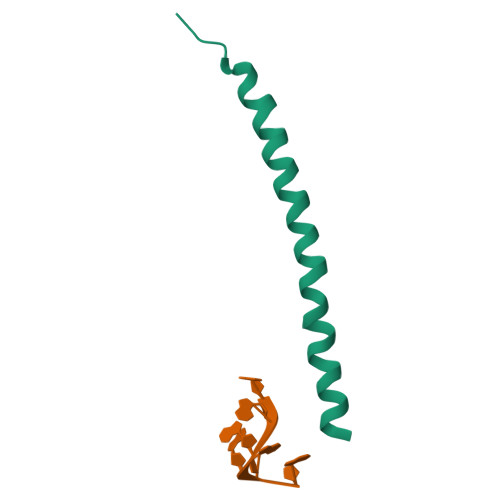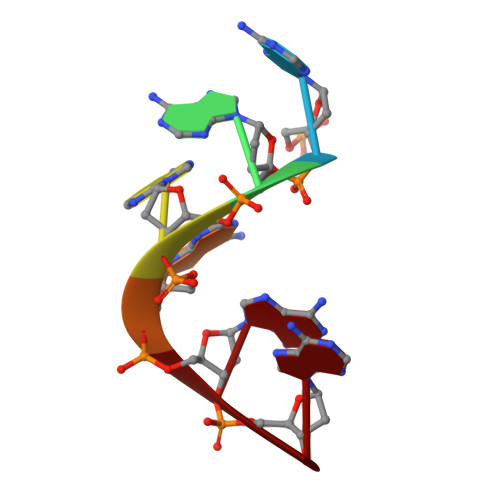Phage liquid crystalline droplets form occlusive sheaths that encapsulate and protect infectious rod-shaped bacteria.
Tarafder, A.K., von Kugelgen, A., Mellul, A.J., Schulze, U., Aarts, D.G.A.L., Bharat, T.A.M.(2020) Proc Natl Acad Sci U S A 117: 4724-4731
- PubMed: 32071243
- DOI: https://doi.org/10.1073/pnas.1917726117
- Primary Citation of Related Structures:
6TUP, 6TUQ - PubMed Abstract:
The opportunistic pathogen Pseudomonas aeruginosa is a major cause of antibiotic-tolerant infections in humans. P. aeruginosa evades antibiotics in bacterial biofilms by up-regulating expression of a symbiotic filamentous inoviral prophage, Pf4. We investigated the mechanism of phage-mediated antibiotic tolerance using biochemical reconstitution combined with structural biology and high-resolution cellular imaging. We resolved electron cryomicroscopy atomic structures of Pf4 with and without its linear single-stranded DNA genome, and studied Pf4 assembly into liquid crystalline droplets using optical microscopy and electron cryotomography. By biochemically replicating conditions necessary for antibiotic protection, we found that phage liquid crystalline droplets form phase-separated occlusive compartments around rod-shaped bacteria leading to increased bacterial survival. Encapsulation by these compartments was observed even when inanimate colloidal rods were used to mimic rod-shaped bacteria, suggesting that shape and size complementarity profoundly influences the process. Filamentous inoviruses are pervasive across prokaryotes, and in particular, several Gram-negative bacterial pathogens including Neisseria meningitidis , Vibrio cholerae, and Salmonella enterica harbor these prophages. We propose that biophysical occlusion mediated by secreted filamentous molecules such as Pf4 may be a general strategy of bacterial survival in harsh environments.
Organizational Affiliation:
Sir William Dunn School of Pathology, University of Oxford, OX1 3RE Oxford, United Kingdom.

















